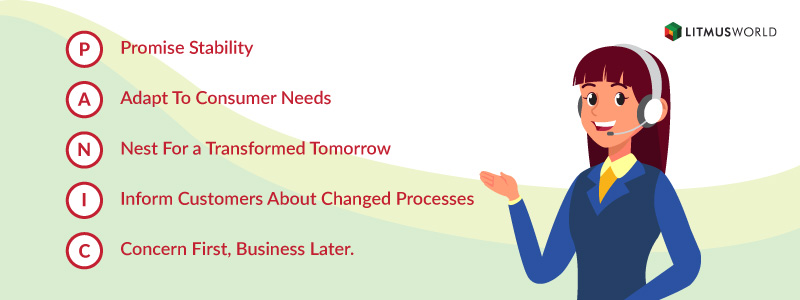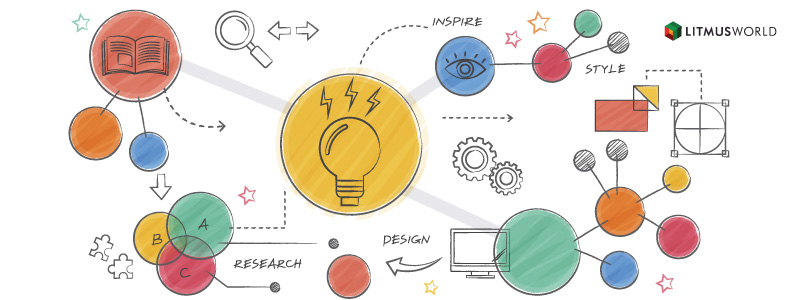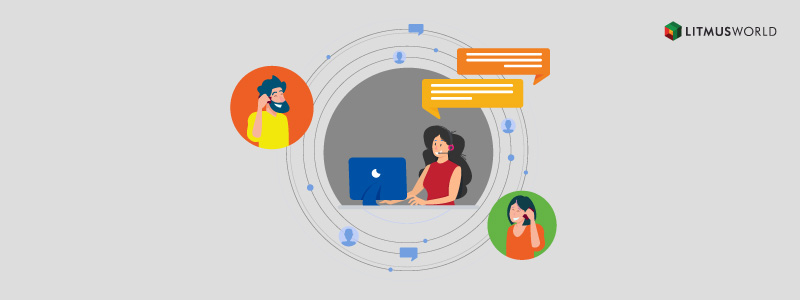Using the #Panic Model to Build Customer Relations
Using the “PANIC” Model to Build Customer Relations

The COVID-19 pandemic has forced businesses to maintain and build relationships with consumers when their world has been upended. Businesses are now facing panic between generating sales during a period of extreme economic hardship and respecting the threats to life and livelihood that have altered consumer priorities and preferences. One of the biggest challenges for organizations today is to build customer relations through these difficult times.
This panic is very real, and organizations are struggling to find a way to survive long periods of severely diminished cash flow. So, what can vulnerable businesses do to strengthen relationships with consumers when social distancing has minimized or eliminated personal interaction?
Here is a #PANIC Model to help you reduce this panic and build lasting customer relations during COVID-19 phase:
- P – Promise Stability
- A – Adapt To Consumer Needs
- N – Nest For a Transformed Tomorrow
- I – Inform Customers About Changed Processes
- C – Concern First, Business Later.
Promise Stability
Elaborate how, despite the evident changes in the way you operate, you will continue to provide the things they love about your brand — the defining reasons why they prefer your business instead of others. If consumers value the impeccable quality of your products or the thoughtful nature of your customer service, tell them how will you maintain those value propositions.
Elaborating these points of assurances is important in reminding consumers that your company’s value proposition — your worth to them — transcends the obstacles imposed by this crisis.
Adapting To Consumer Needs

Sun Tzu, who penned The Art of War, recognized that chaos presents an opportunity for innovation. This sentiment has reverberated through the ages. Beyond assuring customers that your company’s existing value propositions will remain the same, tell them what innovations have risen from dealing with the ongoing pandemic — after all, necessity is the mother of invention.
Tell your existing customers how you are serving them in new ways. Reach out to potential customers by offering new products or services that solve a new problem. Companies that take these measures, and let consumers know about them, will inject hope into their heartache, as they see how companies are developing ways to make their lives better. Doing so offers the added benefit of further humanizing a company.
Nest For A Transformed Tomorrow
Establish a timeline for when you will re-evaluate the impact of the changes you made your company’s operations. While you must comply with any government-imposed limits, do more if you can afford it. Show customers that you are willing to go beyond what you need to do for their benefit, particularly if your company can handle the financial burden.
Your company can demonstrate going “above and beyond” in various ways, all of which point to silver linings of the pandemic experience. Make it evident that your company is well-positioned to maintain its revised business model until things return to normal (or not), signalling that it is weathering the storm. Moreover, highlight what your company has learned from the pandemic experience, as well as how these learnings might improve the way your company operates after the pandemic ends. In other words, signal that your company will come out stronger on the other side of the storm. The temporary improvements that satisfy customers now may become permanent improvements to your company’s business model in the future. This will inspire confidence.
Inform Customers About Changed Processes

Inform your customers about all changes to your operation, including new hours, facility closures, staff reductions, customer service availability, and ordering options, among others. While you can reference the emergency government regulations that necessitated these changes, it’s far better if you are viewed as being proactive and motivated by your customers’ best interests. Proactively act on the inevitable before you are forced to act on it.
Concern First, Business Later
Let consumers know that your company understands the dire social circumstances at play and cares about more than simply reaping profit during this difficult time. Empathize with those affected by COVID-19, and spell out the steps you are taking to help customers, employees, and other stakeholders. Your company’s social media sites and customer mailing lists are ideal vehicles for doing this.
In communicating to your customer about what you can offer them, keep your message brief and classy. Although consumers certainly care about the “softer side” of your business, don’t overplay it. Ultimately customers will care most about the value you create for them. Also, expressing too much empathy could come across as insincere and blend into the soundscape of other companies saying the same things.
The key here is to signal that your company is taking ownership of the situation, as much as possible, rather than allowing the situation to take ownership of your company and its valued customers.
With the right customer-centric attitude and an awareness of what people need right now, companies can emerge from this crisis having strengthened their relationships with customers. Build ‘Real’ customer relations during these difficult times. It will cultivate long-lasting goodwill with past customers and help ensure that they stay with you in the future.
We at LitmusWorld hope the best for your business and the people driving it. Feel free to reach out to us at www.litmusworld.com/contact-us for any support.
Stay safe.

